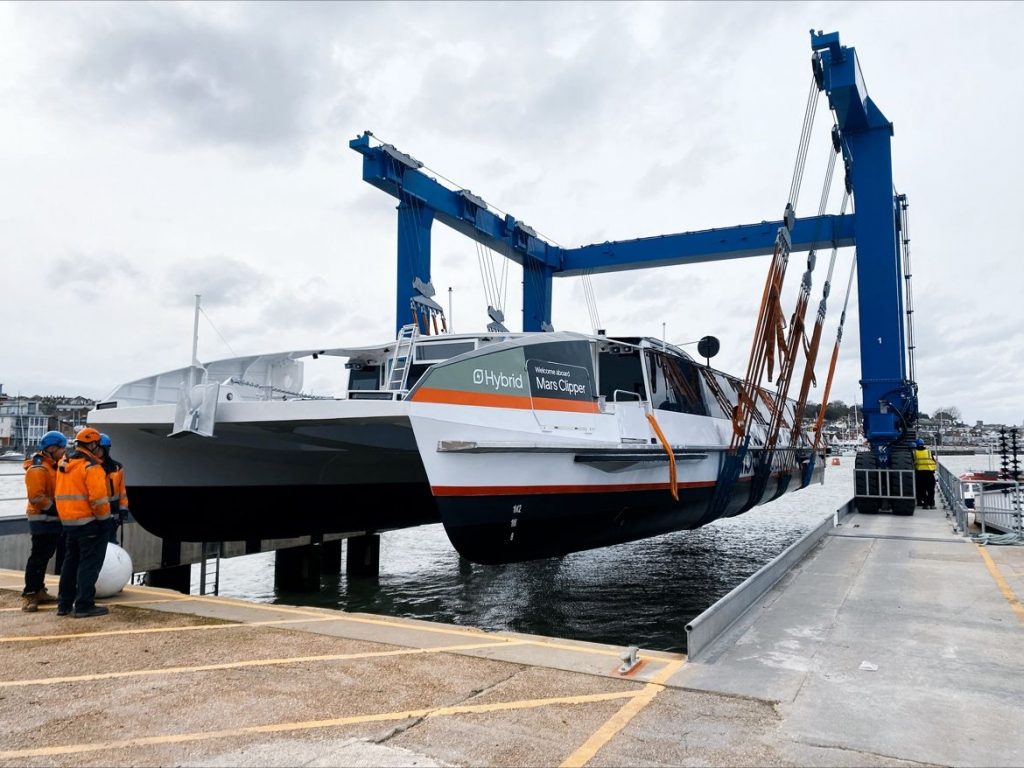Popular Questions with their answers
| Ability to run on when out of the office, connecting back to network over Microsoft direct access. |
| The Maxsurf software executables are typically installed locally on individual laptops, allowing the software to run when out of the office. Normal operation of Bentley SELECT licensing (as used by Maxsurf) requires an internet connection. Maxsurf will continue to run offline for a period of 7 consecutive days If an internet connection is unavailable. If the machine is to be used offline for longer periods, a license may be ‘checked-out’; a checked-out license counts as permanent usage until the license is checked back in. https://communities.bentley.com/communities/other_communities/licensing_cloud_and_web_services/w/wiki/41085/how-to-check-out-licenses-for-offline-machines |
| Software/licensing to run with normal user privileges. |
| Elevated privileges are not required to run Maxsurf. The user must have normal read and write access to the files they wish to open and modify in Maxsurf. During installation a Microsoft User Account Control (UAC) dialog will be displayed. |
| Create 3D models including hull, superstructure, appendages, tanks and compartments in a user-friendly manner for existing vessels from lines plans and associated drawings |
| Maxsurf models for stability analysis require NURB and/or quad- tri-mesh surfaces to define the watertight envelope of the hull, superstructure and appendages. Tanks and compartments are defined by numerically-specified planar boundaries which are automatically clipped to the hull envelope. Tanks with more complex geometry can be bounded by additional surfaces. The approach to modelling existing vessels depends on the available data: full 3D surface model; structured section or point data; unstructured point clouds; digital 2D lines plans; paper lines plans. There are many tools included in Maxsurf which facilitate creating a model suitable for analysis. However the effort and time required to generate such a model depends very much on the quality and format of the available data describing the existing vessel. |
| Import generic 3D surface models e.g. iges, dwg. Responses should include all file types supported. |
| Maxsurf can import geometry from a large range of CAD and marine-specific data file formats. The effort and time required to generate a Maxsurf model suitable for stability analysis depends very much on the quality and format of the original data. For instance a GHS model may be imported and used for hydrostatic analysis directly without modification; on the other hand a 2D DXF lines plan would require some work to create a 3D model suitable for analysis. Maxsurf supports the import of the following file formats from which it recognises specific entities: MicroStation DGN > NURBS surfaces and curves; IGES > NURBS surfaces (untrimmed); Rhino 3DM > NURBS surfaces and curves (untrimmed); IMSA > NURBS surfaces (untrimmed); USNA / Fastship > NURBS surfaces (untrimmed); DXF >Curves and Markers Background; GHS > Marker sections; PIAS ascii > Marker sections; Seaway > Marker sections; Wolfson LHF > Marker sections; nuShallo PAN > Mesh; Polygon PLY > Mesh; Stereo Lithography STL > Mesh; WAMIT GDF > Mesh; Image PNG, JPEG, GIF > Background image |

| Compute hydrostatic data for a given model in an editable tabular format |
| Maxsurf calculates the upright hydrostatic properties of the vessel at a range of prescribed drafts or displacements at specified trim. Computed data include: volumetric properties (volume, centre of buoyancy), waterplane properties (area, moments of area, centre of floatation), coefficients of form etc. Data are presented in tabular and graphical format. The datasets displayed in each may be selected independently from a wide range of hydrostatic properties. |
| Compute tank sounding tables for compartments in an editable tabular format, and include ability to define sounding pipes |
| Maxsurf produces calibration tables for tanks and compartments. These may be computed for a range of trims and heels or for the vessel in the upright condition only. The data presented in the sounding tables and graphs are customisable from a wide range of properties (sounding, ullage, %full, volume, mass, centre of gravity, volumetric moments of inertia, free surface area and area moments, etc). A default vertical sounding pipe is automatically generated for each tank. The shape of the sounding pipe may be modified if required. The default sounding intervals may also be modified. |
| Create editable loading conditions |
| Maxsurf has a spreadsheet-like load case editor where fixed weights and tank loads can be specified. Fixed weights may be point loads or distributed longitudinally. Tank loads may be specified by %full, volume, mass, ullage or sounding. Several options for tank free surface moment are available: max at any sounding; value at actual sounding or user-specified. Load groups (e.g. lightship mass) may be defined and the same load group added to any load case ensuring, for example, exactly the same lightship loads used for arrival and departure load cases. The format of the load case table may be customised by hiding unnecessary columns and sorting rows into any order. Comment and sub-total rows may be added to the load case (eg, rows containing sub-totals for each type of fluid). The ballast required in one or more ballast tanks can be calculated automatically to achieve a target vessel displacement and trim. |
| Undertake comprehensive intact stability analysis including limit curves and include the ability to assess dynamic criteria (for example OSV increased area under GZ curve) |
| Maxsurf provides comprehensive intact stability analysis. GZ curves are calculated from first principles for the specified loading condition. The GZ is calculated at each of the specified heel angles with the vessel free to trim or at specified fixed trim. Maxsurf provides a comprehensive range of well over 50 basis calculations which can be performed on the resulting GZ curve (eg: max and mini values and the angles at which these occur, intersections with heeling arms etc). These calculations form the basis of stability criteria where the result of the calculation is compared with a required value. These calculations include integration of the area under the GZ curve between fixed limits and also limits which depend on other parameters of the GZ curve; furthermore IMO criteria (such as the OSV rules in MSC.267(85) and HSC rules in MSC.96(73) where the required area under the GZ curve depends on the angle at which max GZ is achieved) are also provided in Maxsurf. Sets of customised criteria derived from the basis calculations may be created. Within the constraints of the type of calculation being performed, these are completely customisable (eg the limits to be used when integrating the area under the GZ curve). Examples of customised criteria covering a significant number of national and international stability codes are provided with Maxsurf. Maxsurf can compute curves of maximum VCG for a range of displacements. The max VCG is computed at each displacement such that the selected stability criteria are just passed. The fundamental assumption of the analysis is that lowering the VCG will make it more likely for the criteria to pass. |
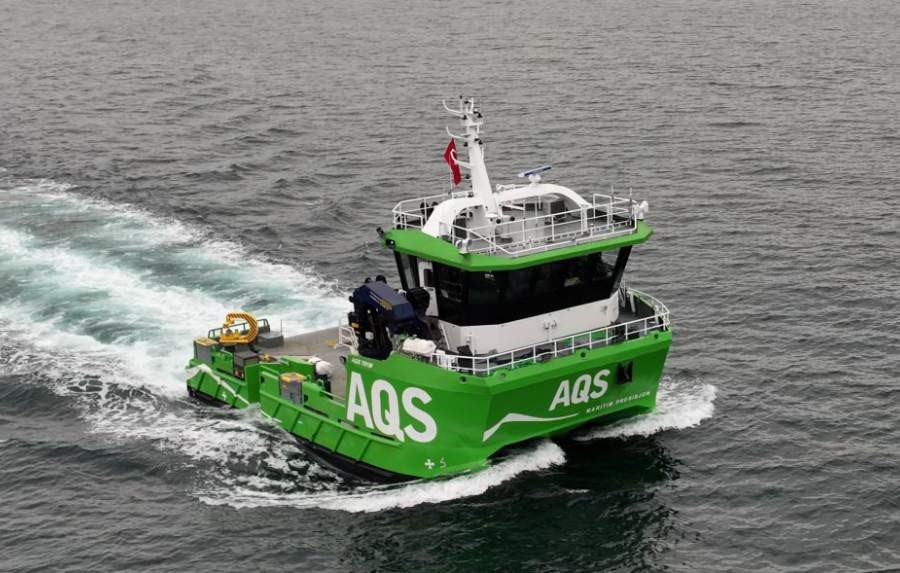
| Undertake comprehensive deterministic damage stability analysis, with editable damage cases, and ability to run across a range of displacements and trims |
| Maxsurf can apply damage to virtually all stability analysis modes (eg upright hydrostatics, large angle stability, limiting KG, Cross curves, etc). The range of drafts/displacements heel and trim will depend on the analysis mode. For example upright hydrostatics are computed for a single fixed trim at a range of drafts or displacements; large angle stability is computed for a specific load case at a range of heel angles. Multiple runs may be done for any analysis mode for a different trim or load case and the results stored in a SQLite database and included in the report. Maxsurf may be scripted using (for example VBA, VBscript, Python) to automate runs over different parameter. Any number of damage cases may be specified in addition to the “intact condition” which is always present. The damage is specified by selecting which tanks or compartments are to be flooded. Damage is always computed using the “lost buoyancy method”. Damage may be “full” where the lost buoyancy level in the flooded tank is up to the external sea level; or “partial” where the lost buoyancy is limited to a max percentage of the tank volume. A “conditional flooding” option may be specified whereby a tank is only considered as damaged if a specified inflow point, linked to the tank, is immersed. The user may specify whether or not liquid cargo in damaged tanks should be removed from the load case. Stability criteria may be selected for only intact or only damaged or both types of conditions. |
| Ability to generate critical KG Curves for all intact and damage stability criteria applied including severe weather criterion and across all damage states. |
| The batch analysis provides a simple way of computing the limiting KG curves for a range of displacements for the intact and all the damage cases. A single envelope curve can be computed for all criteria or individual envelope curves can be computed for each criterion (the latter is more computationally intensive). Results of the batch analysis can be sent to a text file, MS Word report file and SQLite database. Maxsurf’s automation API provides a way of customising the range and parameters of the analyses and reporting. The automation API can be accessed from a range of languages including VBA (eg MS Word or Excel macros), VBscript and Python. |
| Includes Water on Deck, Cross-flooding, progressive flooding, spill out |
| Water on Deck Analysis as specified in “Stockholm Agreement” and MCA MSN 1790(M) may be applied when the GZ curve is computed. This effectively modifies the GZ curve due to the shift in CG caused by the water-on-deck. Stability criteria can be specified to use either the water-on-deck modified GZ curve or the original, unmodified curve. Cross-Flooding Analysis following the method outlined in IMO MSC.362(92) is provided. Cross flooding connections between pairs of compartments are defined. Maxsurf computes the vessel condition immediately before cross flooding, the final condition after full equilibrium and the condition at any number of specified time steps between. Progressive Flooding Analysis: Maxsurf provides the ability to specify partial damage (lost buoyancy is limited to a fraction of the filled compartment) and conditional flooding (buoyancy is lost from a damaged compartment only when a specified point, linked to the compartment is immersed). These provide the tools necessary to define multiple damage cases to simulate progressive flooding. The results of the cross-flooding analysis may be used to help establish the partial flooding to be applied. Spill Out of liquid cargo in tanks may be specified by spill out points linked to a tank. When heeled, the level of the liquid cargo will be reduced to the height of the lowest spill out point linked to the tank. Spill out analysis is only possible when the “simulate fluid” option is applied. |
| Undertake comprehensive probabilistic damage stability analysis, including MSC.421(98) |
| Maxsurf provides probabilistic damage stability analysis as specified in IMO MSC.421(98) and MASC.429(98) as well as the older formulations specified in MSC.216(82) and MSC.19(58). The analysis requires that the user specify: a) General parameters, including 3 load cases which define the deepest, partial and light draft conditions for the analysis as well as vessel type, number of crew etc. b) Longitudinal subdivision into zones; transverse subdivision by longitudinal bulkheads and vertical subdivision due to decks (for which the various probability factors are computed automatically) c) Which compartments are breached in each damage space; the final damage and any intermediate stages of damage that are to be considered. d) Whether the damage includes RoRo spaces and the permeabilities to be used for each load condition Maxsurf calculates all the different damage cases to be tested and their associated probabilities, at this point the user can review and, if desired, discard any damage cases deemed unnecessary to the analysis. The results of the analysis present key data resulting from the GZ curve evaluation and the A factor for all of the conditions tested as well as the final attained index compared with the required index. A separate table contains the hydrostatic data at the final equilibrium of each of the conditions tested. Detailed information including the GZ curve and criteria evaluation for each condition can be sent to a text file. |
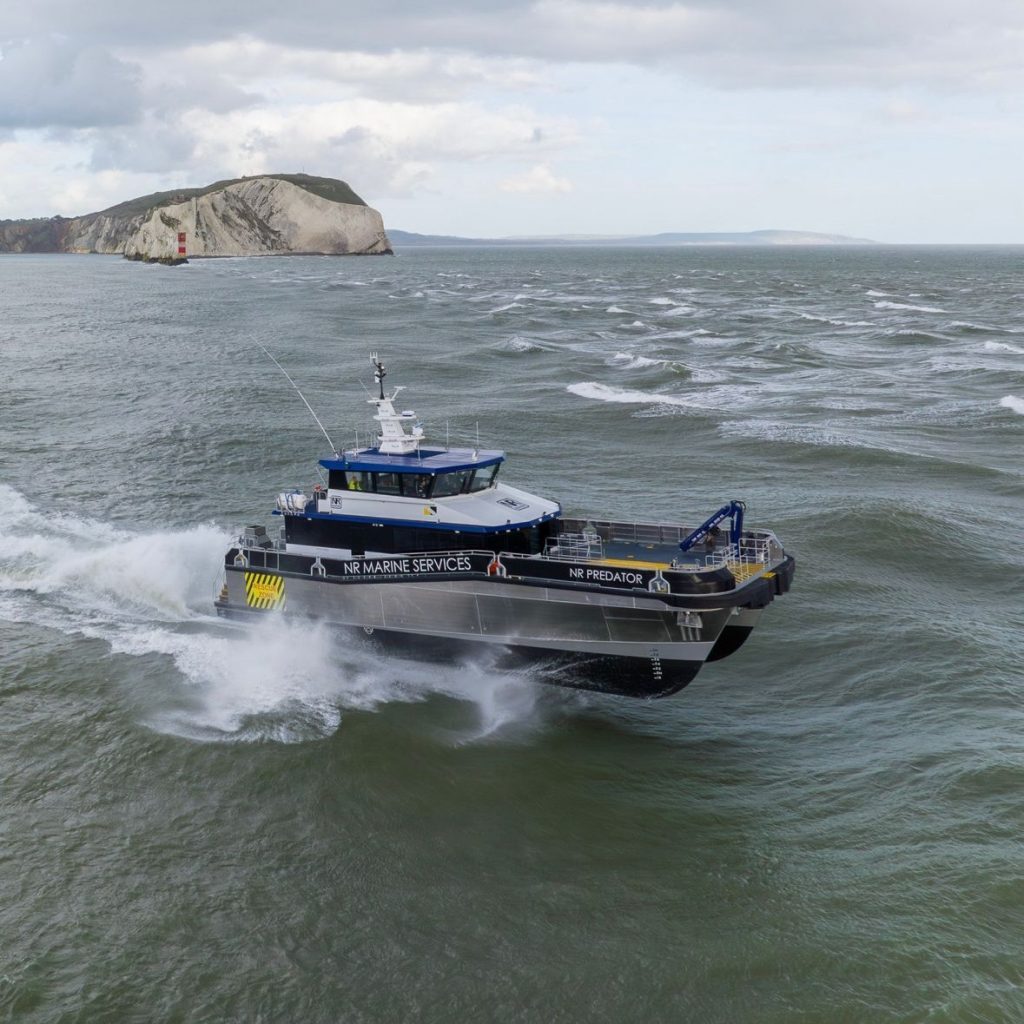
| Compute grain heeling moments and apply stability requirements of International Code for the Safe Carriage of Grain in Bulk |
| Provision is made in the Maxsurf stability criteria for calculating the required GM and Grain Heeling Moment as defined in IMO MSC.23(59). These calculations require the combined length of all full compartments, stowage factor and average void depth to be specified. The grain heeling arm is then used in conjunction with the computed GZ curve to evaluate the stability criteria. |
| Ability to create and edit criteria relating to GZ curve, heeling levers, equilibrium position etc. |
| Maxsurf provides a comprehensive range of well over 50 basis calculations which can be performed on the GZ curve (eg: max and min values and the angles at which these occur; value of GZ or GM at specified heel angle or points on the GZ curve; area under the GZ curve or between GZ and heeling arm curves; GZ area or value ratios at different heel angle or points on the curve; intersections with heeling arms; and many more). These calculations form the basis of stability criteria where the result is compared with a required value. Maxsurf criteria calculations can find the intersection points between the GZ curve and heeling arms (to give angles of equilibrium and vanishing stability for example); also to find the value and angle where the maximum difference of GZ and heel arm occurs. Heeling arms may be combined (for example passenger crowding and wind). Heeling arms may be computed for specified phenomena: wind, passenger crowding, turning, towing, trawling, etc. The heeling arm due to wind may use different coefficients at different heights and may also use the projected area of the vessel either upright or at each heel angle. User-specified heeling arms or moments may be defined allowing heeling curves of any shape to be used. Calculations which relate to some criteria are also provided. IMO roll-back angle for the Weather criterion and required GM are two examples. Sets of customised criteria derived from the basis calculations and heeling arms may be created. Within the constraints of the type of calculation being performed, these are completely customisable (eg the limits to be used when integrating the area under the GZ curve). Examples of customised criteria covering a significant number of national and international stability codes are provided with Maxsurf. |
| Ability to compute actual transverse shift moment for free surfaces |
| With the “fluid simulation” mode enabled, Maxsurf computes the actual shift of liquid cargo in tanks. The fluid is moved to maintain the free surface of the tank parallel to the sea surface accounting for vessel trim and heel. In general this results in a transverse, vertical and longitudinal shift of the liquid cargo CG (it is not possible to constrain the shift to only the transverse component). The vessel CG is adjusted due to the fluid shift at each iteration of the analysis. This results in modified GZ and other parameters as compared to the “frozen fluid” method where the liquid cargo CG is fixed at the location for the vessel in the upright condition. Corrections to GM are always accounted for by a virtual rise of CG based on the transverse 2nd moment of area of the tank free surfaces; using “fluid simulation” the updated (due to fluid shift) tank free surface is used at each iteration. (Sloshing and dynamic effects are not included.) Maxsurf also has the option to use a “corrected VCG” approach; the transverse free surface moments (FSM) are used to calculate a virtual rise of the CG which is then used during the analysis. There are several options available for specifying the FSM and the value is fixed for each heel angle. The options are: FSM of upright tank free surface at actual filling level; max value at any filling level (upright vessel); user specified value (this may also be applied to fixed masses if desired); FSM according to IMO A.749(18). The user may define the filling levels above and below which the FSM should be ignored. |
| Integrated criteria included to assess a wide range of Rule Compliance |
| Maxsurf provides a comprehensive range of well over 50 basis calculations which can be performed on the resulting GZ curve. These calculations form the basis of stability criteria where the result is compared with a required value. As well as the calculations and criteria based on the GZ curve, there are also calculation and criteria based on the vessel hydrostatics at equilibrium. Sets of customised criteria derived from the basis calculations may be created. Within the constraints of the type of calculation being performed, these are completely customisable (eg the limits to be used when integrating the area under the GZ curve). Examples of customised criteria covering a significant number of national and international stability codes are provided with Maxsurf. |
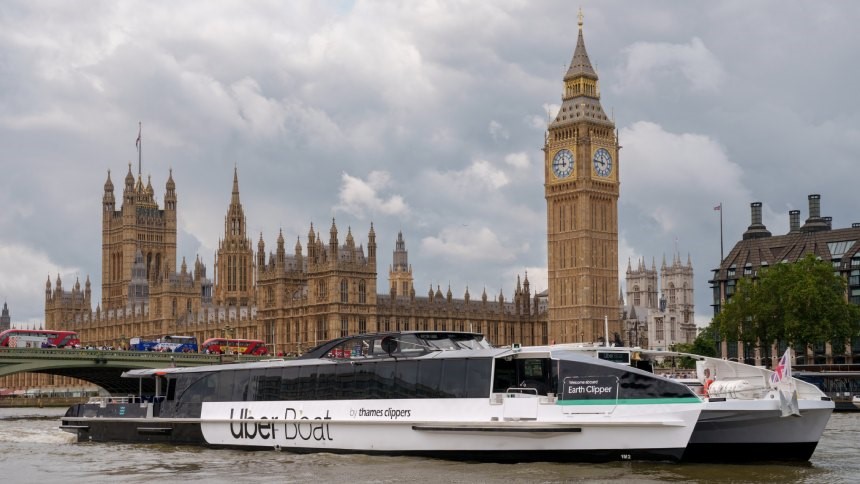
Additional Functionality
Report generation
Maxsurf Stability has several ways of producing reports. The simplest, default, option outputs the relevant data, tables and graphs for each analysis mode to either the internal report editor window in Stability or a MSWord document (requires MSWord to be installed on the computer). The required graph and table format should be set up prior to running the analysis and the data are sent to the report automatically after each analysis. Results can also be stored in a SQLite database and a report may be generated from the results sets in the database using any adjusted formatting that has been applied to the tables and graphs. The next level of sophistication is to use a MSWord template document to provide greater control over the format of the report. The template can be used to specify which report elements should be included in the report for each analysis. The greatest level of control over the reporting is achieved by using the Maxsurf Stability automation API to run the analyses and to extract the data required for the report. The scripts can be written in a MSWord or Excel macro in VBA or as a stand alone script in VBscript or Python, for example. Furthermore, since all the results data are stored in a SQLite database these data may be accessed by third-party or in-house reporting tools.
Stability also has a simple built-in batch-run capability which will run selected analysis types for all combinations of load case and damage conditions. These data are stored in a text file (without graphs) and, if desired, sent to the report document (in this case graphs can be included). The probabilistic damage analysis can also generate a log file with detailed GZ, criteria and equilibrium results for all the conditions tested.
Inclining test
Maxsurf Stability may be used to simulate and/or process the measurement from an inclining experiment using the Specified Conditions and Equilibrium analyses. The initial conditions of the vessel are first computed using a Specified Condition analysis specifying the draughts fore and aft, this will yield the vessel displacement and centre of buoyancy and can be used to verify the lightweight survey. The GM for the vessel will be computed from the results of the inclining test in the usual way. If desired, the Specified Condition analysis may be used to verify the displacement for the heeled vessel using the measured drafts and heel angle for each of the weigh movement steps. Finally once the GM has been estimated a verification simulation, in Maxsurf Stability using an Equilibrium analysis, may be performed.Feature enhancement
The Maxsurf development team are always keen to discuss ideas for new features and enhancements to the software with users.
| To operate Maxsurf 2024. Supported Operating Systems comprise Windows 10 and 11 (both 64-bit): Home, Pro, Enterprise, and Education The minimum recommended workstation profile for running Maxsurf is: Intel® or AMD® processor 1.0 GHz or greater. Maxsurf is not supported on a CPU that does not support SSE2. Memory: 4 GB minimum, 16 GB recommended. More memory improves performance, particularly when working with larger models. Hard Disk: 4 GB free disk space (which includes the 2 GB install footprint for a complete installation)Video: Graphics card which fully supports DirectX 11 and OpenGL with up to date drivers. A stand-alone graphics card with 512 MB of video RAM or higher is recommended. Screen: A resolution of at least 1024 x 768 or higher |
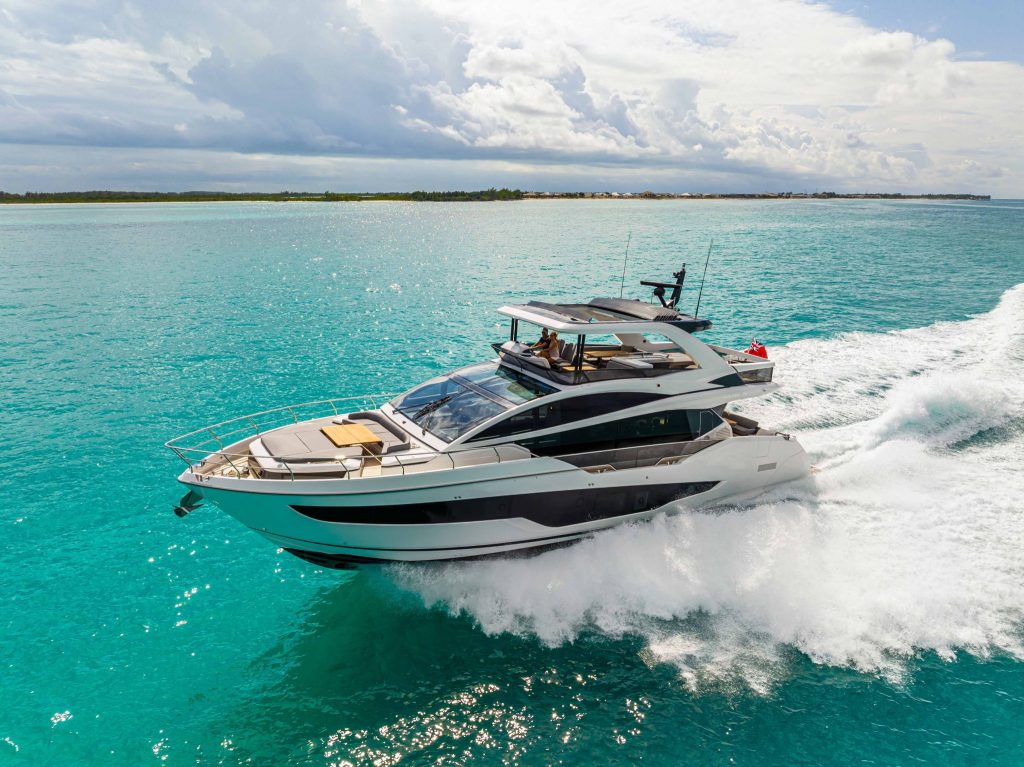
Support Technical is delivered through a dedicated portal. Maxsurf technical support staff are qualified naval architects.
https://www.bentley.com/support/
The quantity of Licenses may be increased or decreased. The user has full access to the portal that controls the number of licenses that may be used concurrently. These changes are instantaneous. Concurrent use of more licenses than the user is entitled to will incur a Term License fee.
https://communities.bentley.com/communities/other_communities/licensing_cloud_and_web_services/w/wiki/29816/term-licensing-and-application-usage-faqs Once users have created an account with Bentley they may download the latest installers from the Bentley server. Users are notified of new releases through an in-application news feed. Once the software is installed on the new laptop, users can use the software immediately but will be required to log in to the Bentley licensing CONNECTION client within the 7 day grace period to refresh their license
https://softwaredownloads.bentley.com/en/ProductDetails/2143
Approach to provision of training for experienced surveyors and naval architects
| Here is an outline: Maxsurf Customisable Training courses – example syllabus for Maxsurf Modeler and Stability (5 days total) Modelling: Maxsurf environment and User Interface; Customizing UI; Coordinate system and Frame of reference; Geometry entities Markers, Curves, Surfaces, Meshes; Vessel types; Windage groups; Drawing settings; Defining Contours; Basic modelling of all kind of hulls (few surfaces). Advanced hull modelling; Quality checking; Modelling of sheet based hulls with developable surfaces; Strategies for modelling good geometry that to be used by downstream CAD programs.; How to use reference geometry (scanned images, dxf drawings, markers); Preliminary hydrostatics in Maxsurf Modeler; Export of line drawing as dxf or x,y,z table; Export of model to 2D/3D CAD Stability analysis: Preparing the geometry model; Review of analysis modes; Load cases; Compartments and Tanks; Defining key points; Damage conditions; Stability Criteria; Analysis modes in detail; Analysis output and reporting; Advanced review of all analysis modes; Inclining experiment; External forces and moments; Docking; Automation API and scripting The syllabus would be tailored to match the experience of the attendees to attain maximum proficiency in the use of the Maxsurf products for their needs. Future new staff would have access to the existing training collateral. Refresher training for existing staff over the lifetime of the contract could be delivered by webinars and videos demonstrating new features. Bentley provides many materials for new users on each module including Detailed Manuals, QuickStart Guides, Almost 100 short targeted training videos, 150 sample designs, various longer Training Webinars, online Bentley Institute Certificated Training Courses, 24/7 Support. Training material is provided in digital format. The training documents, typically pdf documentation and videos, are all available online. The documents are available at Bentley Communities: https://communities.bentley.com/products/offshore/w/wiki/54653/maxsurf-learning-content and the videos may be viewed on Youtube https://www.youtube.com/c/BentleyOffshoreAnalysis |
Full Life Cycle Support
The Maxsurf suite of integrated naval architecture software has been under active development since 1984. Bentley Systems purchased Maxsurf in 2011 and have continued to develop the software with many of the same team.
New releases since 1984 have been at least annually with documentation of Release Notes. The cumulative list of features added since January 2012 is available but is 29GB. An abridged list is at https://maxsurf.net/update-notes-2
Compatibility with Previous Versions. MAXSURF data files are forward and backward compatible between most versions of MAXSURF. Where backward compatibility has been broken, the option to export to earlier file formats is provided in the new version. MAXSURF has been verified for use on the Microsoft Windows 11 operating system.
Bentley Systems has made changes to the support lifecycle of desktop applications. One of the key changes is that major versions of Maxsurf will be supported with critical fixes for at least five years, although users are still encouraged to update to each new version to benefit from new features that are added to Maxsurf. These changes are detailed on the following web page: https://www.bentley.com/support/bentley-lifecycle-policy/
The Perpetual License of Maxsurf with the annual SELECT subscription has been proposed to enable eight concurrent users. After the contract the Department may choose to extend the annual subscription with full benefits. Or without the annual subscription the perpetual license will still be owned. This enables use without updates, support or networking.
One of the benefits of a SELECT subscription is the ability to pool licenses across any number of machines. In the absence of a SELECT subscription, a perpetual license only confers a product use entitlement for a single user on a single machine. With the Subscription Entitlement Service (SES), product activation is managed by user sign in through the CONNECTION Client, which is installed on each machine that uses Bentley applications. Licenses may be checked out for offline use.
